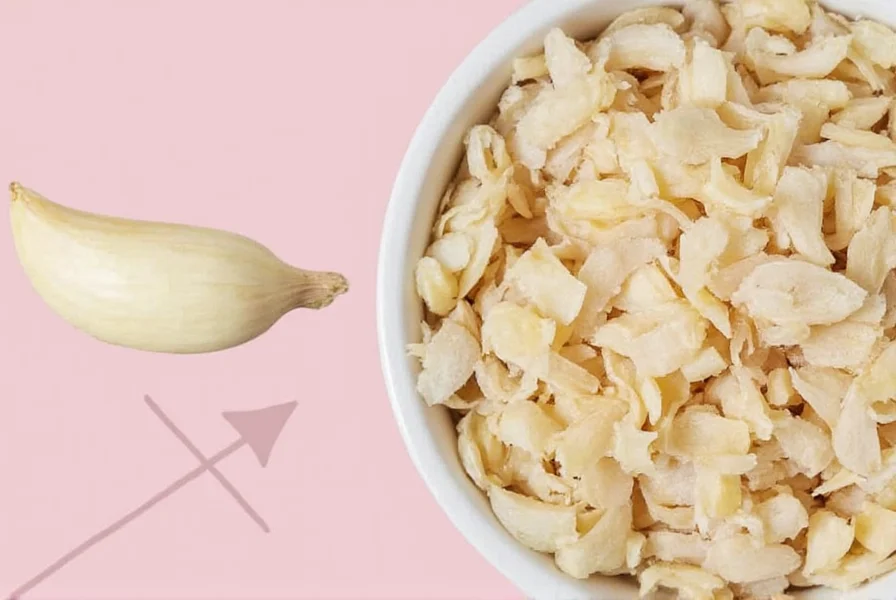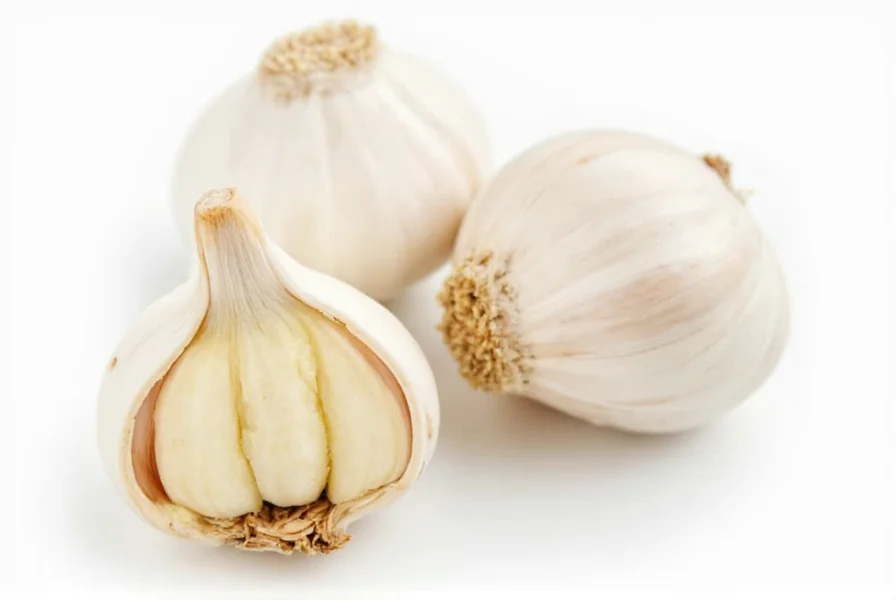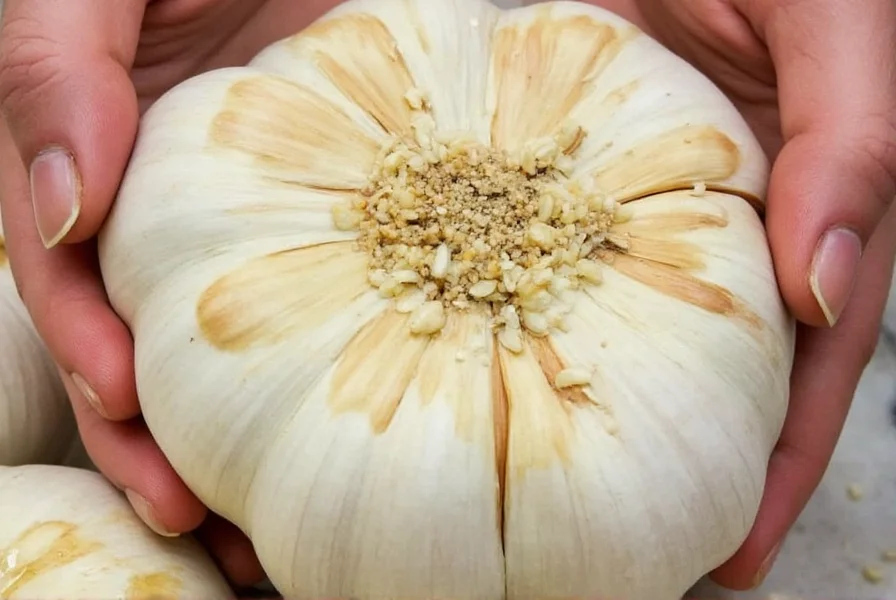Understanding garlic measurements is essential for achieving perfect flavor balance in your cooking. When recipes call for specific amounts of minced garlic but you're working with whole cloves, knowing the precise conversion prevents under or overpowering your dishes. The standard measurement—1 garlic clove = 1/2 teaspoon minced garlic—serves as your culinary baseline for most cooking applications.
Garlic Measurement Fundamentals
Garlic size varies significantly between varieties and growing conditions, which affects conversion accuracy. Most recipe developers assume medium-sized cloves when specifying measurements. A medium clove typically measures about 1 inch long and 3/4 inch in diameter at its widest point.
| Garlic Form | Equivalent to 1 Medium Clove | Notes |
|---|---|---|
| Whole clove (peeled) | 1 clove | Baseline measurement |
| Minced garlic | 1/2 teaspoon | Freshly minced, not packed |
| Chopped garlic | 1 teaspoon | Larger pieces than minced |
| Garlic powder | 1/8 teaspoon | Use 1:8 ratio (powder:clove) |
| Bottled minced garlic | 1/2 teaspoon | Check for added ingredients |
Factors Affecting Garlic Conversions
Several variables influence the accuracy of garlic measurements. Understanding these helps you adjust when following recipes:
Clove Size Variations
Garlic cloves range from small (petite varieties) to jumbo (commercial hybrids). For precise cooking:
- Small cloves: 1 clove = 1/4 teaspoon minced
- Medium cloves: 1 clove = 1/2 teaspoon minced
- Large cloves: 1 clove = 3/4 teaspoon minced
- Jumbo cloves: 1 clove = 1 teaspoon minced
Preparation Technique Matters
How you mince garlic affects volume. Finely minced garlic packed tightly into a measuring spoon yields more garlic per teaspoon than loosely spooned minced garlic. For consistent results, lightly spoon minced garlic into your measuring spoon without packing.

Practical Application in Recipes
When adapting recipes, consider these real-world scenarios:
Substituting Fresh for Prepared Garlic
If a recipe calls for 1 tablespoon (3 teaspoons) of minced garlic, you'll need approximately 6 medium cloves. This conversion helps when switching between fresh and bottled garlic products.
Garlic Powder Conversion
Garlic powder provides convenient shelf-stable flavor but requires different measurements. Remember the 1:8 ratio—1 clove equals 1/8 teaspoon garlic powder. Exceeding this ratio creates an artificial garlic flavor that dominates dishes.
Roasted Garlic Equivalents
Roasting transforms garlic's texture and intensity. One roasted medium clove equals approximately 1 teaspoon of minced raw garlic in terms of flavor impact, though the volume differs significantly.

Professional Kitchen Tips
Experienced chefs employ these techniques for perfect garlic integration:
- Timing matters: Add minced garlic during the last 1-2 minutes of cooking to preserve its delicate flavor compounds
- Size consistency: Uniform mincing ensures even flavor distribution
- Flavor development: Let minced garlic rest 10 minutes after cutting to maximize allicin production
- Storage impact: Older garlic cloves yield less volume when minced due to moisture loss
Common Measurement Mistakes to Avoid
Many home cooks make these garlic measurement errors:
- Using packed rather than loosely spooned measurements
- Not accounting for clove size variations between grocery store batches
- Substituting garlic salt using volume measurements rather than weight
- Assuming all bottled minced garlic has identical concentration to fresh
When Precision Matters Most
Certain dishes require exact garlic measurements. In mayonnaise-based sauces, aiolis, and delicate fish preparations, even 1/4 teaspoon difference affects the final product. For robust stews and braises, approximate measurements work well since long cooking times mellow garlic's intensity.
Conclusion
Mastering garlic conversions elevates your cooking from acceptable to exceptional. Remember that 1 medium garlic clove equals 1/2 teaspoon of freshly minced garlic as your foundational measurement. Adjust for clove size, preparation method, and recipe requirements to achieve balanced flavor in every dish. The difference between perfectly seasoned food and overpowering garlic overload often comes down to these precise measurements.
How much jarred minced garlic equals one fresh clove?
One teaspoon of quality jarred minced garlic typically equals one medium fresh garlic clove. However, check the product label as concentrations vary between brands. Some premium products maintain a 1:1 ratio with fresh, while others are more concentrated.
Can I substitute garlic powder for fresh minced garlic?
Yes, but use the proper ratio: 1/8 teaspoon garlic powder equals one medium fresh garlic clove. Garlic powder has concentrated flavor, so exceeding this ratio creates an artificial taste. Add it early in cooking to allow rehydration.
Why does my minced garlic measurement seem off sometimes?
Garlic clove size varies by season and variety. Spring garlic produces smaller cloves than fall harvests. Also, how tightly you pack minced garlic into measuring spoons affects volume. For consistency, lightly spoon minced garlic without packing.
How many cloves of garlic equal 1 tablespoon of minced garlic?
One tablespoon (3 teaspoons) of minced garlic equals approximately 6 medium garlic cloves. This conversion helps when adapting recipes that specify volume rather than clove count.
Does roasting garlic change the measurement conversion?
Yes, roasted garlic has different volume and flavor intensity. One roasted medium clove equals about 1 teaspoon of raw minced garlic in flavor impact, though the physical volume is less due to moisture loss during roasting.











 浙公网安备
33010002000092号
浙公网安备
33010002000092号 浙B2-20120091-4
浙B2-20120091-4